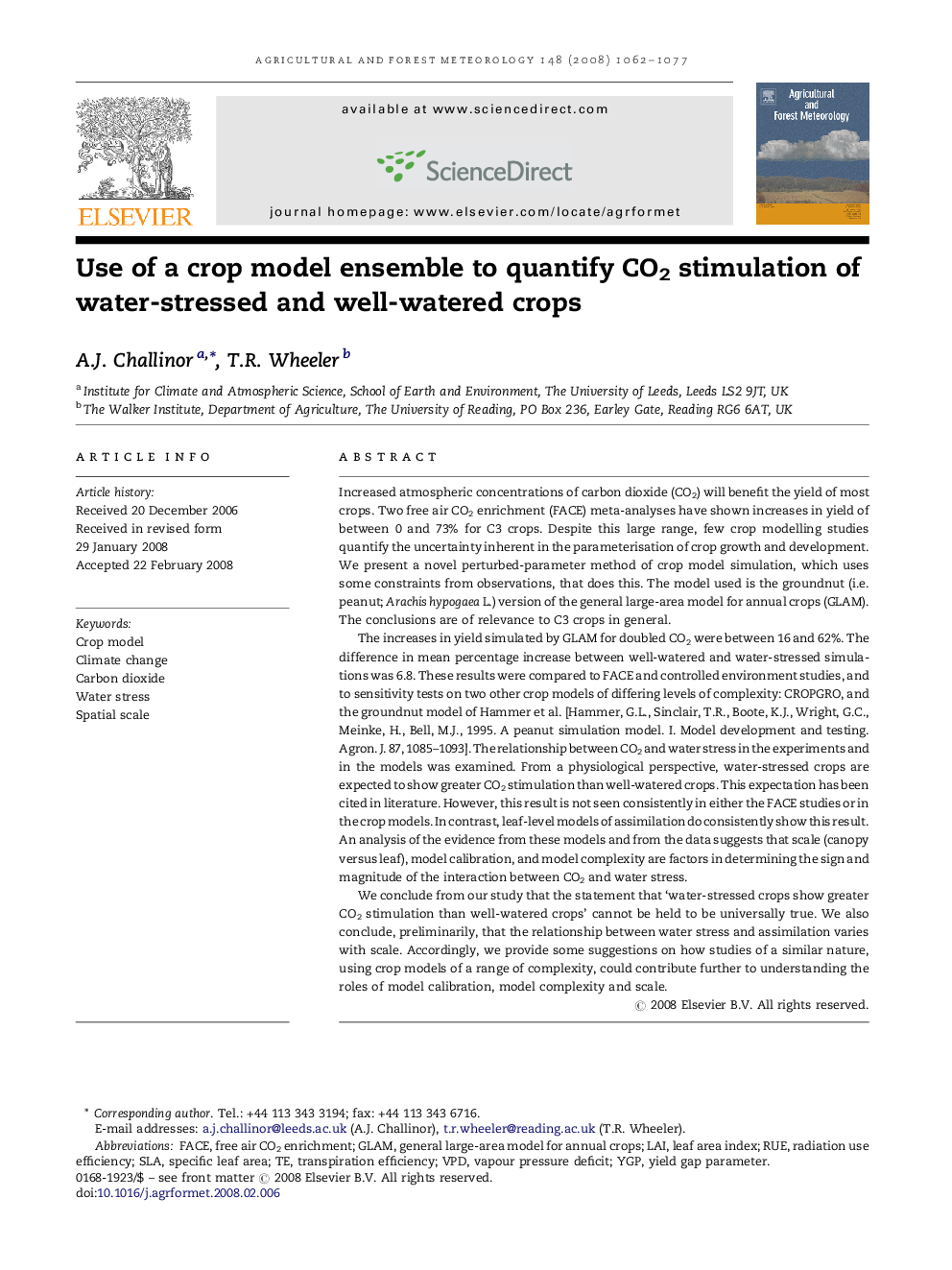| کد مقاله | کد نشریه | سال انتشار | مقاله انگلیسی | نسخه تمام متن |
|---|---|---|---|---|
| 82793 | 158416 | 2008 | 16 صفحه PDF | دانلود رایگان |

Increased atmospheric concentrations of carbon dioxide (CO2) will benefit the yield of most crops. Two free air CO2 enrichment (FACE) meta-analyses have shown increases in yield of between 0 and 73% for C3 crops. Despite this large range, few crop modelling studies quantify the uncertainty inherent in the parameterisation of crop growth and development. We present a novel perturbed-parameter method of crop model simulation, which uses some constraints from observations, that does this. The model used is the groundnut (i.e. peanut; Arachis hypogaea L.) version of the general large-area model for annual crops (GLAM). The conclusions are of relevance to C3 crops in general.The increases in yield simulated by GLAM for doubled CO2 were between 16 and 62%. The difference in mean percentage increase between well-watered and water-stressed simulations was 6.8. These results were compared to FACE and controlled environment studies, and to sensitivity tests on two other crop models of differing levels of complexity: CROPGRO, and the groundnut model of Hammer et al. [Hammer, G.L., Sinclair, T.R., Boote, K.J., Wright, G.C., Meinke, H., Bell, M.J., 1995. A peanut simulation model. I. Model development and testing. Agron. J. 87, 1085–1093]. The relationship between CO2 and water stress in the experiments and in the models was examined. From a physiological perspective, water-stressed crops are expected to show greater CO2 stimulation than well-watered crops. This expectation has been cited in literature. However, this result is not seen consistently in either the FACE studies or in the crop models. In contrast, leaf-level models of assimilation do consistently show this result. An analysis of the evidence from these models and from the data suggests that scale (canopy versus leaf), model calibration, and model complexity are factors in determining the sign and magnitude of the interaction between CO2 and water stress.We conclude from our study that the statement that ‘water-stressed crops show greater CO2 stimulation than well-watered crops’ cannot be held to be universally true. We also conclude, preliminarily, that the relationship between water stress and assimilation varies with scale. Accordingly, we provide some suggestions on how studies of a similar nature, using crop models of a range of complexity, could contribute further to understanding the roles of model calibration, model complexity and scale.
Journal: Agricultural and Forest Meteorology - Volume 148, Issues 6–7, 30 June 2008, Pages 1062–1077